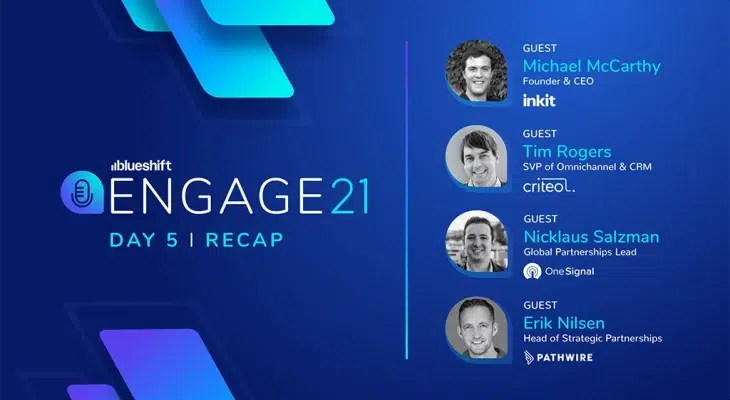First, how would you define omnichannel customer engagement?
Nick: “I think omnichannel engagement is probably a term that’s thrown out a lot in the industry. But if you boil it down, it’s sending the right message at the right time to the right user. It’s just figuring out when’s the appropriate time to talk to somebody and what’s the appropriate message that will resonate with them.”
What’s the typical entry point for the customer experience?
Tim: “I think about channels. There are a plethora of starting points, as well as a plethora of opportunities for personalization and engagement and organizing. Take that consumer experience and personalize it to all channel outcomes and all channel inputs.”
What are the other benefits connected to the customer journey?
Michael: “The omnichannel experience never really ends from the standpoint of a marketer. You’re going to want that customer to not only purchase from you once but to ideally, repurchase from you time and time again.”
Tim: “87% of consumers have tried a new retailer or e-commerce company during the pandemic. And by large, the majority of those consumers are willing and able to repurchase from that customer. […] Existing customer base is imperative and even more imperative now. You’ve got to work harder to make sure that you move those consumers up into your higher lifetime value segments.”
What are some of the challenges companies and brands face in connecting the customer experience?
One of the main challenges seen by the guests is keeping your brand top of mind across different channels especially when it comes to a crowded space where everyone can communicate. The massive traffic to sites due to pandemic circumstances and neglecting the value of loyalty campaigns was another challenge raised.
Any success stories, things that are working?
Tim: “Building a holistic audience strategy, driving all channel outcomes and really educating those multi-channel retailers and omnichannel retailers. […] If you look through a single channel lens, you miss out on a bunch of opportunities.”
Nick: “If you’re not exploring different channels and testing that strategy, you’re missing out on revenue and a potential channel to communicate with customers. We see this all the time. We work with tons of e-commerce brands that maybe have never heard of Web Push notifications, for example.”
How about failures, things that are not working?
Erik: “I’m not going to name any brands specifically, but I have seen some brands that are targeted more towards the Gen Z generation, and they don’t engage with email very much. […} 13-15-year-olds aren’t checking their email every day. So I think utilizing other channels is huge.”
What is the future of customer engagement?
Tim: “I think it’s gonna be very much more customer-centric. Everyone in the world has been thinking about this from the brand’s perspective, traditionally. And it’s the age of empowerment for the consumer at the moment. And to that end, brands need to be far more privacy-compliant to address those consumer needs.”
Michael: “Marketing is going to become quite literally individualized using different tools like AI. In the next five years, I truly believe that workflows will become a thing of the past. And that tools like Blueshift will be able to optimize when to send the text message, when to send the email or when to send the TV ad, etc, based on single individuals tastes and preferences.”
Nick: “There’s going to be more channels over the next 5-10-20 years. And they’re going to have to stay up to date with what’s going on. And so platforms really focus on extending and connecting the various channels and always staying up to date are going to be important. And I also think that you’ll see vertical-specific channels start to open.”
And that’s all for the last day! It was an amazing session that left us truly inspired. We want to thank everyone who made this whole week possible. We will need some time to process all the great information we received, but that can only mean we learned a lot! If you missed any of the sessions, you can always check the other blog posts:



